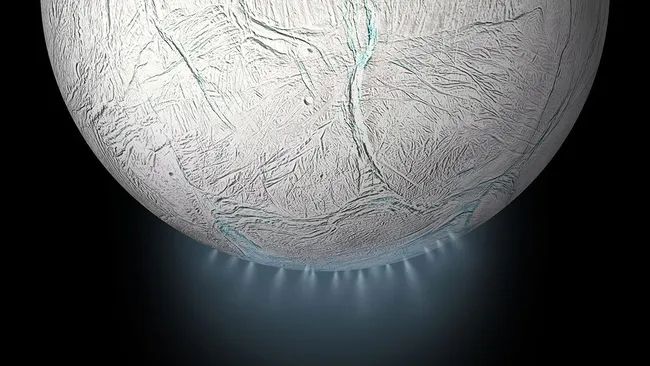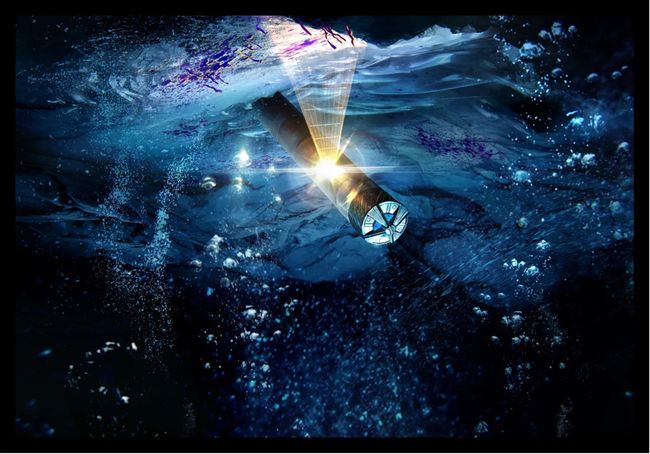NASA’s Strategy Unveiled: Sending Subterranean ‘Cryobots’ to Saturn and Jupiter’s Icy Moons
NASA Outlines Key Aspects for Developing Robotic Systems to Explore Water-Ocean Icy Moons
NASA is charting a course for robotic missions that would venture into oceanic worlds during upcoming space expeditions, aiming to penetrate the thick icy layers encasing these realms in pursuit of potential life. Recently, insights were shared from a NASA-sponsored workshop held in February 2023, where scientists and engineers convened to explore prospective mission ideas involving “cryobots.” The objective is to breach the frozen exteriors of celestial bodies such as Jupiter’s moon Europa or Saturn’s moon Enceladus, deploying probes into their liquid oceans for exploration.
The proposed cryobot method diverges from conventional drilling techniques, employing a cylindrical apparatus dispatched from a surface-based unit onto an icy ocean world. This device would utilize heat to liquefy the ice, allowing it to descend as water envelops it and subsequently refreezes.
While similar thermal drilling approaches are currently used on Earth to study glaciers and ice caps, the icy shells of Europa and Enceladus pose distinct challenges due to their extreme cold and substantial thickness, coupled with unpredictable behaviors.
Researchers supported by NASA’s Scientific Exploration Subsurface Access Mechanism for Europa (SESAME) and Concepts for Ocean worlds Life Detection Technology (COLDTech) programs have been dedicated to adapting terrestrial thermal drilling methodologies for extraterrestrial environments using cryobots for several years. However, as our understanding of ice-covered ocean worlds continues to expand, the workshop hosted at the California Institute of Technology (Caltech) served as a platform for scientists involved in these initiatives to reconvene. Their goal was to ensure that the latest advancements are integrated into the architecture of robotic missions targeting these fascinating worlds.
To find life, follow the water
Life, as we comprehend it, relies on numerous crucial compounds, molecules, and elements. Yet, arguably, none holds as much significance as water.
Being a foundational component for life on Earth, it’s evident why scientists directing their search for life beyond our planet have centered their focus on water. While we’ve confirmed its abundance in our cosmic vicinity and even farther, the most captivating revelation for astrobiologists remains the existence of vast liquid water oceans within icy moons in our own solar system.
Although the revelation that Mars, once barren, was once teeming with water presents an undeniably thrilling prospect to uncover remnants of ancient life, oceanic moons like Europa and Enceladus present an opportunity to explore worlds currently capable of sustaining life. There’s a possibility that these watery realms may presently harbor living organisms, potentially microbial in nature, which would be groundbreaking to discover.
As per NASA’s findings from the Caltech workshop, four crucial elements emerged to shape the blueprint for creating a robot designed to explore alien worlds with water. These elements encompass power, thermal capacity, maneuverability, and communication.
A bot that can bring the heat under pressure
Certainly, the formidable challenge of exploring the miles-thick icy coverings enveloping our oceanic celestial bodies presents a significant hurdle for missions seeking signs of life. Consequently, the core of a cryobot engineered for ocean world exploration would necessitate a nuclear-powered system capable of generating heat substantial enough to penetrate these extensive ice layers—estimated to require about 10 kiloWatts (kW) of energy. Crafting such a system involves integrating it into a structure resilient enough to endure the immense pressures found in these extraterrestrial deep-sea environments.
While the endeavor seems complex, there are precedents for developing such a system. The Cassini spacecraft, which extensively surveyed Saturn and its moons before its final plunge into the gas giant’s atmosphere in 2017, housed a thermal power system generating 14 kW—exceeding the energy necessary to penetrate miles of ice. Moreover, in the 1960s and 1970s, Radioisotope Thermoelectric Generators (RTGs) were deployed to the depths of Earth’s oceans, potentially hinting at their survivability within Europa’s high-pressure oceans.
However, the futuristic cryobot faces the dual challenge of not only shielding itself from its harsh environment but also managing the heat it generates. This demands a robust thermal management system capable of regulating a safe internal temperature for the bot by dispersing heat into the surroundings.
Scientists propose a potential solution involving two distinct, independently pumped fluid circuits. One circuit would channel an internal working fluid through the robot’s skin-embedded channels, while the other would circulate melted ice water between the cryobot and its ambient surroundings, aiding in temperature regulation.

Although systems with similar functionalities have been manufactured previously, substantial further development remains imperative to adapt them adequately for the challenging ice shells of Europa or Enceladus.
These ice layers might harbor impurities like rock and salt, necessitating additional systems for a robot to penetrate them effectively. Methods could include mechanical cutting, employing high-pressure water jets to dislodge these impurities, or even a combination of both techniques.
Yet, certain impediments, such as sizable and solid rocks, salt formations, pockets of water, or extensive voids within these icy shells, might prove resistant to these methodologies. Therefore, a cryobot must possess the capability to maneuver its way to subsurface oceans. This mandate involves integrating a downward-facing sensor to detect obstacles and a steering system—technologies previously developed but yet to be fully integrated into functional systems on Earth.
Furthermore, scientists need to devise improved strategies for identifying obstacles within ice shells before undertaking missions to icy oceanic moons—a crucial priority highlighted in the workshop. The upcoming Europa Clipper mission, slated for launch in 2024 and anticipated to reach Jupiter’s icy moon Europa in 2030, could play a pivotal role in advancing this hazard-assessment work.
Breaking the ice but not communication
Finally, the other crucial facet deliberated upon at the Caltech workshop pertained to establishing a communication network allowing essential data transfer from a deep-sea exploration probe to a surface-based mother hub stationed atop the icy surfaces of targeted ocean worlds.
On Earth, cryobots utilize fiber optic cables for this purpose, but deploying these within alien ice necessitates ensuring the ice won’t damage the cable—a formidable challenge, particularly within the dynamic ice shell of Enceladus, prone to shifts and movements as oceanic material erupts through fissures into the moon’s atmosphere.
Kate Craft from the John Hopkins Applied Physics Laboratory (JPL) is examining how ice movements on oceanic moons could affect communication tethers embedded in the ice, while alternative approaches involve exploring non-physical data transmission methods like radio frequencies, acoustics, and even magnetic fields to relay information from oceans through the alien ice to the surface.
While these constituted the four primary elements of discussion among the approximately 40 workshop attendees regarding cryobots designed for ocean world exploration, other considerations were also examined. These included devising instruments capable of sampling and analyzing collected liquids, developing ice anchoring systems to secure surface-based modules, and identifying materials for cryobot surface coating resistant to corrosion in alien environments.
The overarching conclusion drawn from this mission planning endeavor is that while extensive work lies ahead, a cryobot mission to icy celestial bodies within our solar system remains viable. Ultimately, this indicates that the prospect of discovering life on other worlds is more within reach than ever before.
This article is republished from SpaceCom under a Creative Commons license. Read the original article.
Do not forget to share your opinion with us to provide you with the best posts !




0 Comments